Soulful Travel: Mexico Pt 3 - Ancestral Wisdom from Tlaxcala
We continue our journey in Tlaxcala, Mexico with the Reyes López family, whose deep connection to the maguey plant reveals a world where ancestral wisdom meets sustainability. Join us in exploring their stories over pulque and mezcal, uncovering the magic that shapes their view of the cosmos.

A day with the Reyes López family
If you caught part 1 and part 2 of this Mexican adventure, I showed you my reflection in the mirror (on a good day) and a glimpse of the interesting ladies around me. Now, the moment has finally arrived… (drum roll, please) to bring you to where I hoped all along. Now we shall turn the camera around. Don't worry; I’m still here next to you, keeping you company.
I don’t typically share much on social media because, quite simply, I don’t find sharing images of myself all that interesting. Yet it’s oddly what gets the most likes and shares. We subconsciously get programmed to believe this is what is required of us. My question is: Is there an opportunity to see beyond ourselves and recognize the treasures deserving the light of our attention, the likes from our eyes, and the sharing of our hearts?
Well then, let's find out.


Photo by Pedro Vit / Unsplash | Photo by Evan Wise / Unsplash
Continuing our soulful journey, the ladies, their two dogs, and I all packed into the car as we drove out of Mexico City with enthusiasm. The energy simmered in the hours that followed as we drove southbound, circumventing the intense traffic, the notion and commotion encircling the city. As we gained distance from the urban center, the city led to more city… until the urban landscape was replaced by hills, then mountains, and finally volcanoes stretching into the distance.
The first sighting of open fields led to a collective exhale. Ania suggested we take a pit stop to visit a friend, an eco-builder of geodesic domes she had met in Tulum years past. We headed to where he lives on the outskirts of Tlaxcala, a small state in central Mexico with a rich heritage that we were unknowingly about to step into—a beautiful expression of its story.
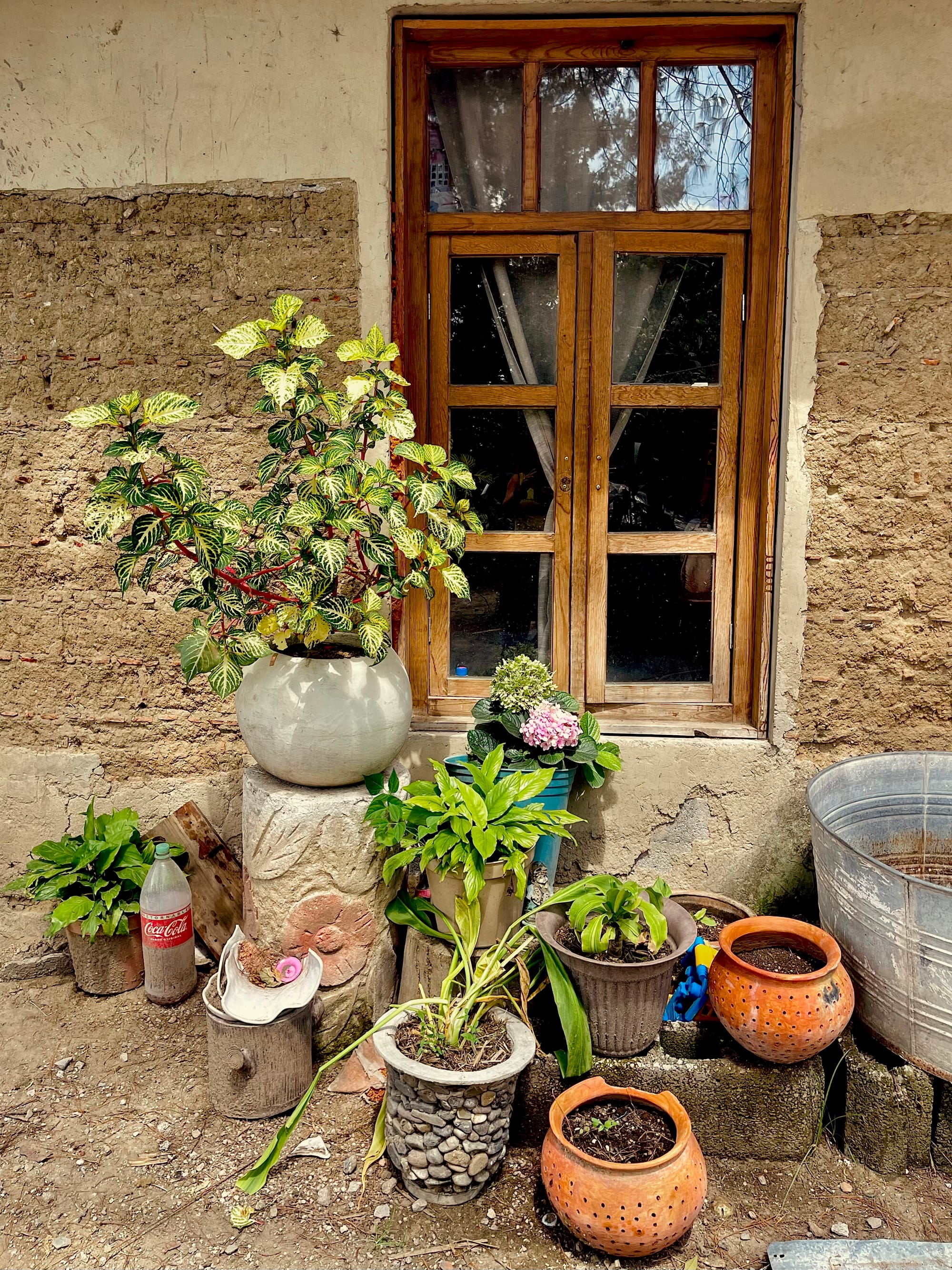

Photo of Reyes López Home by Janelle | Image of a Maguey Cactus
After crisscrossing the rural neighborhood, we entered a piece of land adorned with orange soil and Maguey cactus, arms wide open as if inviting us in. Handmade adobe structures dotted the property, and too many sweet and boisterous dogs to count rushed toward us. I expected to meet a friend; instead, we encountered a village of family.
We thought it would be a brief visit, but we were ushered into the main bedroom, made of adobe, with handmade detailing in the ceiling that felt like a warm embrace. What ensued was an overwhelming amount of hospitality, an expression of their family pride exuding passion.
In the next 24 hours, we got to know the Reyes López family—the grandfather, grandmother, three brothers, two sisters, and their children—each a passionate ambassador of sustainability and their ancestral past, rescuing indigenous wisdom. We were fortunate to catch them in one place, as many of them apparently travel, giving talks and working on projects across Mexico.
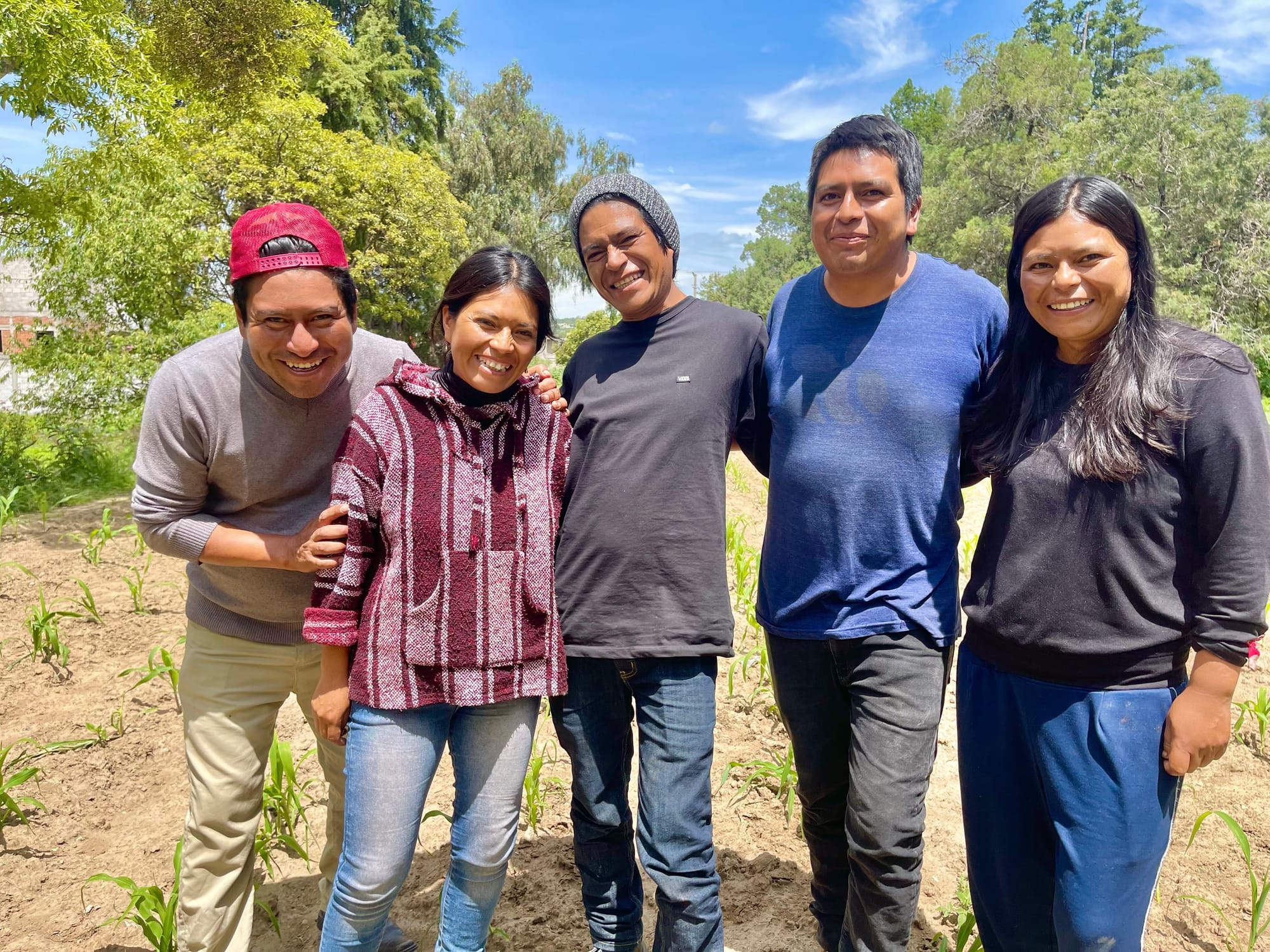
Photo of from Left to Right: Juan, Sulma, Emilio, Saday, and Dulce Reyes López by J
We were provided a seat at the kitchen table, and the three adult brothers launched right into quick-paced discussions about sustainability practices and ancestral traditions. Not two steps behind them was their youngest ambassador in training, a talented 8-year-old boy (con una mirada pícara). The precious little ladies followed, with one later becoming my photography assistant and the others our willing models.

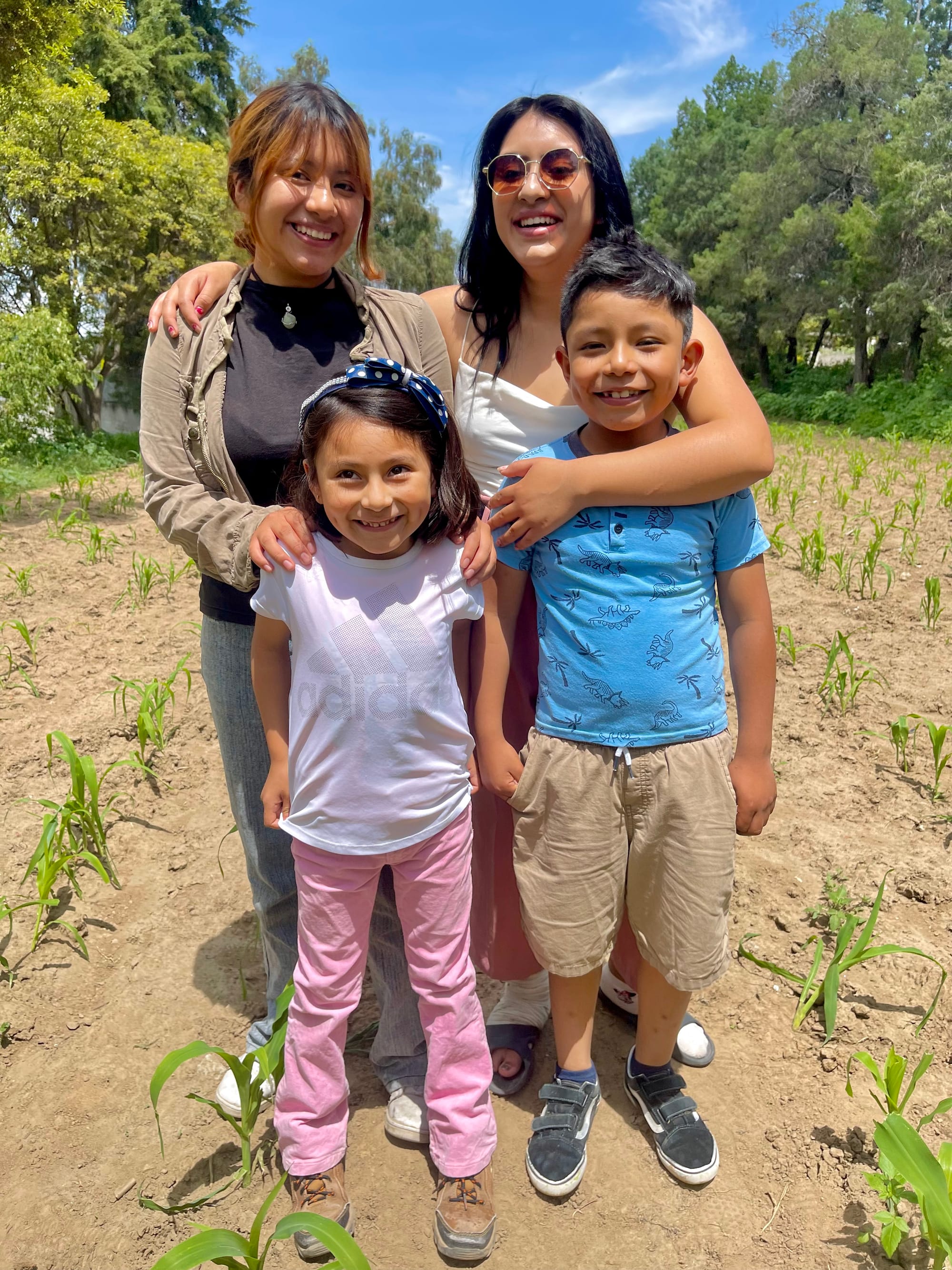
Photo of Samuel, the son of Dulce by J | Photo front to back of the younger generation: Diana, Samuel, Maryori, and Emily by J
Our arrival was toasted with specially made pulque, a fermented drink made from the sap of the maguey agave, which was considered sacred by many Mesoamerican civilizations. We learned about the extraordinary attention to detail and the scientific approach they took to optimize this micronutrient-dense drink packed with vitamins, minerals, and probiotics.
While many Americans and people around the world are primarily familiar with tequila, which is made exclusively from blue agave, over 200 varieties of agave plants thrive abundantly throughout Mexico. Among these, maguey is the most revered due to its deep cultural significance, traditional uses, and versatility in producing beverages, including pulque (octli).


Photo of Mezcal Mayamel by Maryori Mendieta Reyes | Photo of Emily Mendieta Reyes by J
While sipping the mezcal promoted by the family, Yalo shared, “This tastes like ancient knowledge found in the desert.”
The family’s deep connection to the metepantle (from Nahuatl, metl meaning ‘maguey’ and nepantla meaning ‘wall’ or panctli meaning ‘in the middle’ or ‘surrounded by’) reflects their beliefs in La Cosmología del Maguey (the Cosmology of the Maguey), embodying the respect and spiritual beliefs of the people of Tlaxcala. This perspective highlights the integral role of the maguey in sustaining not only the physical but also the cultural and spiritual well-being of the community.


Photo of Janelle, Yalo, Ania, Juan, Salome, and Saday | Photo of a festive tamale prepared by Dulce
Time flew by, and we were fed one treat after another as their beautiful sister Dulce, after a hard day's work, insisted on serving us specialty tamales with ground meat mixed with festive fruits that delighted our senses. We also heard the father’s stories, from defending social justice to making peace with differing perspectives, leading to his greater passion for rescuing his ancestral wisdom. His wife, from Chiapas and tracing her ancestral roots to another indigenous cultural group, filled with pride, shared her passions and a smile that made me want to hug her. She remarked that my eyes glistened, but it was her reflection that had that effect.

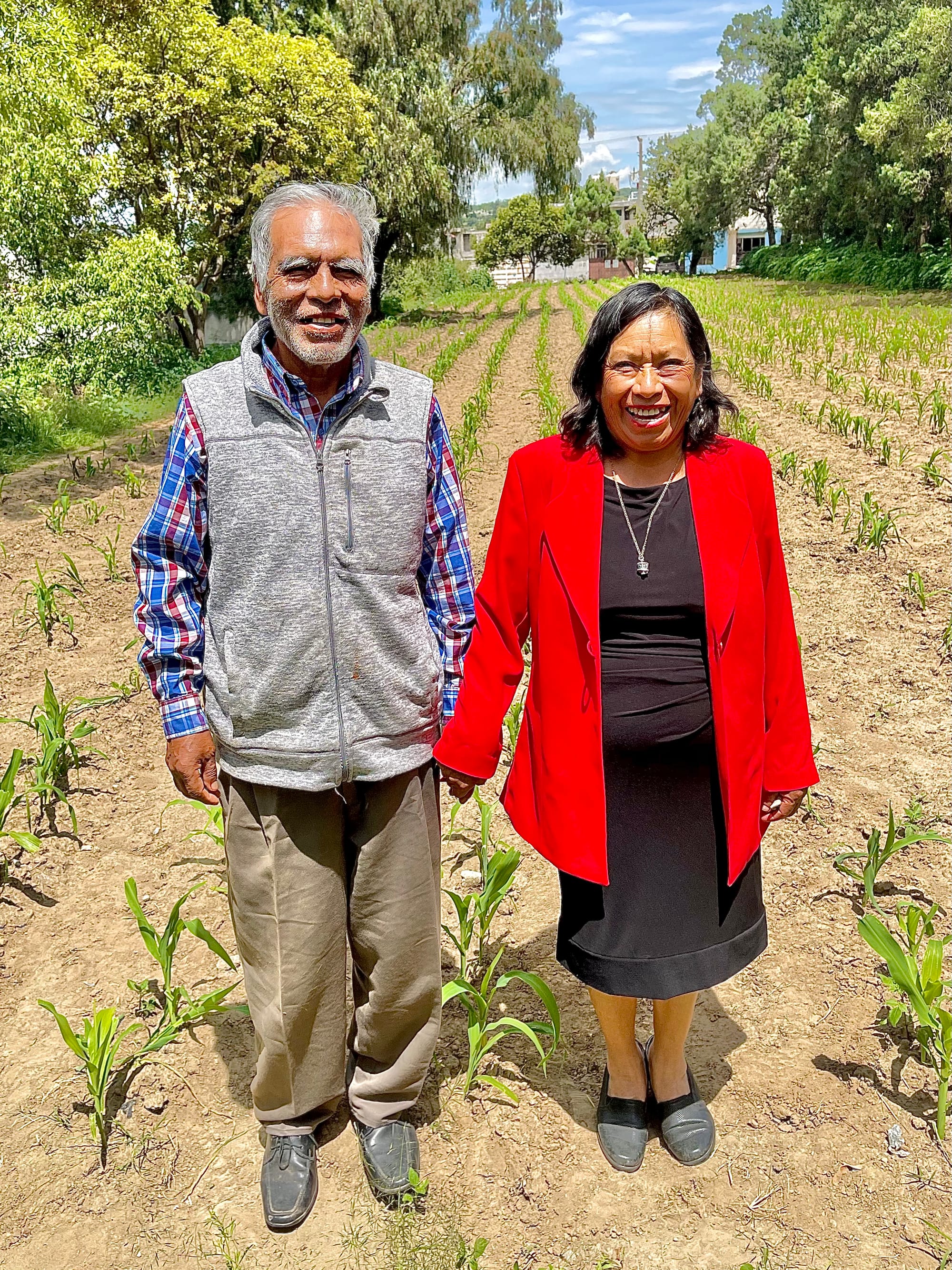
Photos of Irineo Pablo Reyes Salamanca and Salome López Santis by J

Their heritage flowed through this tightly knit family, each member committed to sustainability while maintaining individual autonomy. We toured their nearby lots, where they are growing more vegetables, building geodesic domes, and creating a center to pass on their wisdom to more locals and travelers. There is something truly remarkable about picking your own fresh vegetables from the ground to your plate. I can only imagine how much more potent the nutrients and energy are when they are delivered from Mother Nature and loving hands right into one's belly.

Video of Janelle, Ania, and Yalo by Saday
While brother Emilio enjoys tracking down ancient seeds in the Sierra Mountains and propagating them, Saday, the brother who invited us, leads the creation of domes and adobe natural homes (made of a mixture of clay, sand, water, and organic materials such as straw or grass). If well-built, these organic adobe structures are said to last for hundreds of years. It makes you reconsider how "advanced" some of our modern homes truly are! Here's an example that Saday has on the property.


Photos of Saday Reyes López by J
Sister Sulma designs reusable feminine products and baby pampers with her precious daughter by her side. All the siblings and family members, down to the youngest among them, reflect the family's shared values and traditions across generations. Keeping up with the brothers' soft-spoken, fast-paced Spanish was a challenge at times, but one thing rang clear: they lived with greater purpose and were nourished by it.


Photos of Sulma Reyes López and her daughter Diana Hernández Reyes by J
Tucked right next to the main home where the photos above were taken is another flourishing project. Sister Dulce, a graduate with a Bachelor of Science in Chemistry and a master's degree in Biotechnology from the prestigious local university, cultivates mushrooms right on their property.
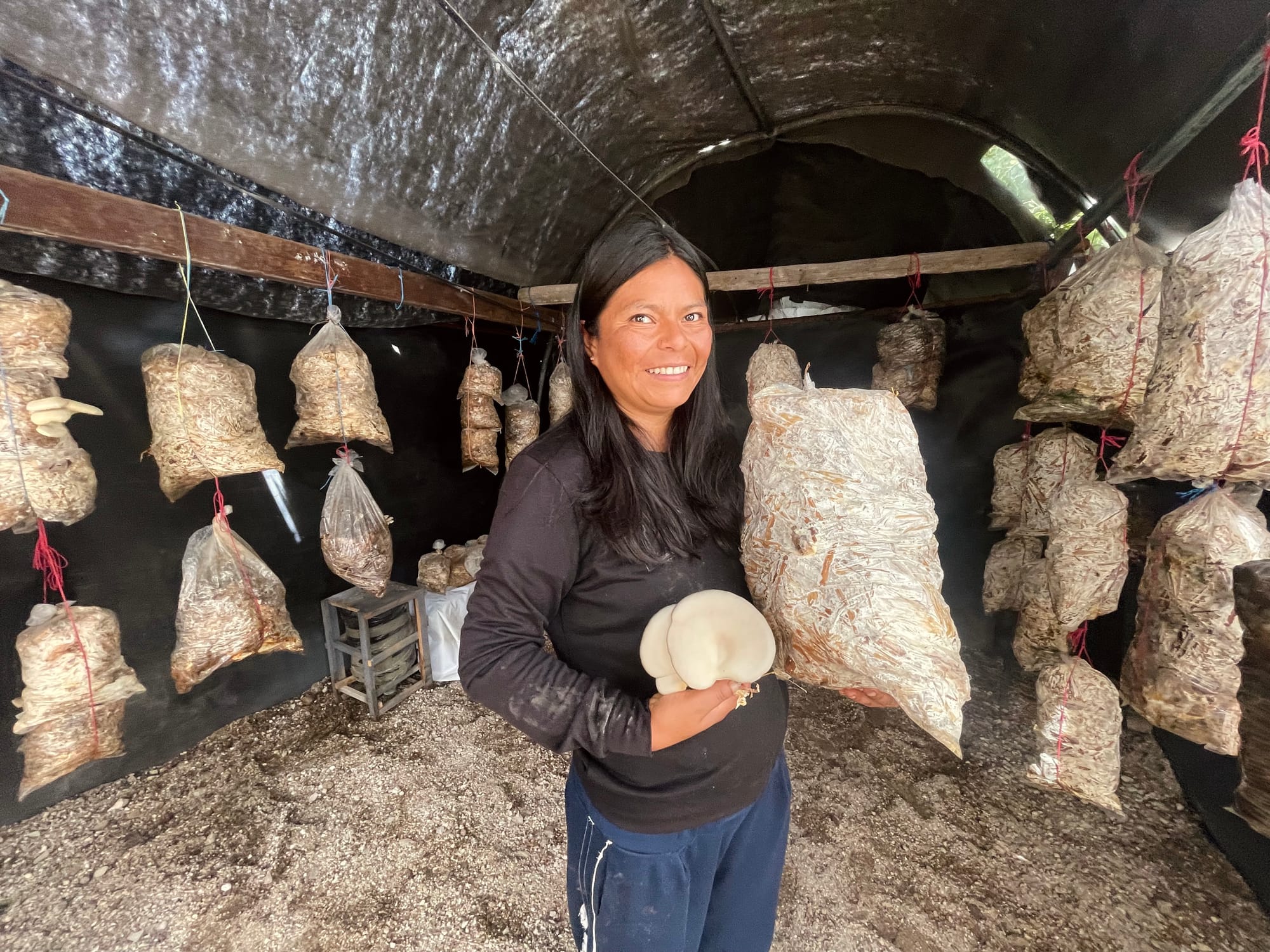

Photos of Dulce Reyes López by J
They are indeed a beautiful family, and the image of Dulce below feels like magic. The light hits her cheekbones and spirit in a way that draws one into the story of their ancestors.

For history buffs and story seekers who enjoy going further down the rabbit hole, here’s a summary of the fascinating local indigenous history reflected in the light of this family. Note: Like most commonly found accounts of history, they can be limited and one-sided, so anyone with input, please feel free to write to me. Consider this a private Wikipedia to collectively evolve!
The Nahua people, who had flourished in central Mexico since the 7th century, included subgroups such as the Aztecs, Texcocans, Chalcas, Huexotzincas, and Tlaxcaltecs. Tlaxcala, where the family lives, was built as an independent city-state in the 12th to 13th century, founded by the Tlaxcaltecs, descendants of the Toltec and a subgroup of the larger Nahua people. They were known for their advanced agriculture and their deep spiritual connection to the cosmos. Among these subgroups, the Tlaxcaltecs distinguished themselves with their fierce commitment to independence, self-determination, and self-sustainability.
For centuries, they thrived and prospered through agriculture and strong communal bonds. By balancing warrior prowess and diplomacy, they resisted mounting external threats, particularly the expanding Aztec Empire. Despite being targeted and eventually surrounded during the Flower Wars, where the Aztecs sought them as sacrificial victims, the Tlaxcaltecs held firm, driven by a deep connection to their land and a shared sense of cultural identity.
When the Spanish arrived in 1519, the Tlaxcaltecs saw an opportunity to end their long-standing enmity with the Aztecs and formed a strategic alliance with Hernán Cortés. Their warriors and knowledge of the terrain were critical to the eventual fall of the Aztec Empire, providing military support essential for Cortés’s success.
The aftermath of the conquest was unforeseen and complex. While the Tlaxcaltecs initially gained certain privileges, such as autonomy and roles in colonial governance, their independence was gradually eroded under the encomienda system, which subjected many Indigenous people to exploitative labor and weakened their control. Despite these challenges, the Tlaxcaltecs managed to preserve their communal strength and cultural traditions, ensuring that their legacy as defenders of independence continues to shape and influence modern Mexican identity. Reference: Biblioteca Virtual Miguel de Cervantes
Back to our adventure: in the evening, we packed into a truck, and the fellas took us on a tour of the city center. Tlaxcala is a beautiful city that resembles many of Mexico's precious cities, with colonial architecture elevated by bright colors from its storied past.
The next morning, I went with Saday around the corner to where the ladies were making fresh tortillas, and we all gathered back in the house around the dining table to eat tamales. After being spoiled by the care of the family, I wondered what I could do for them. The entrepreneur in me, together with Ania, offered branding ideas to help them share their gifts with the world. Below are some generative images I sent to Saday.

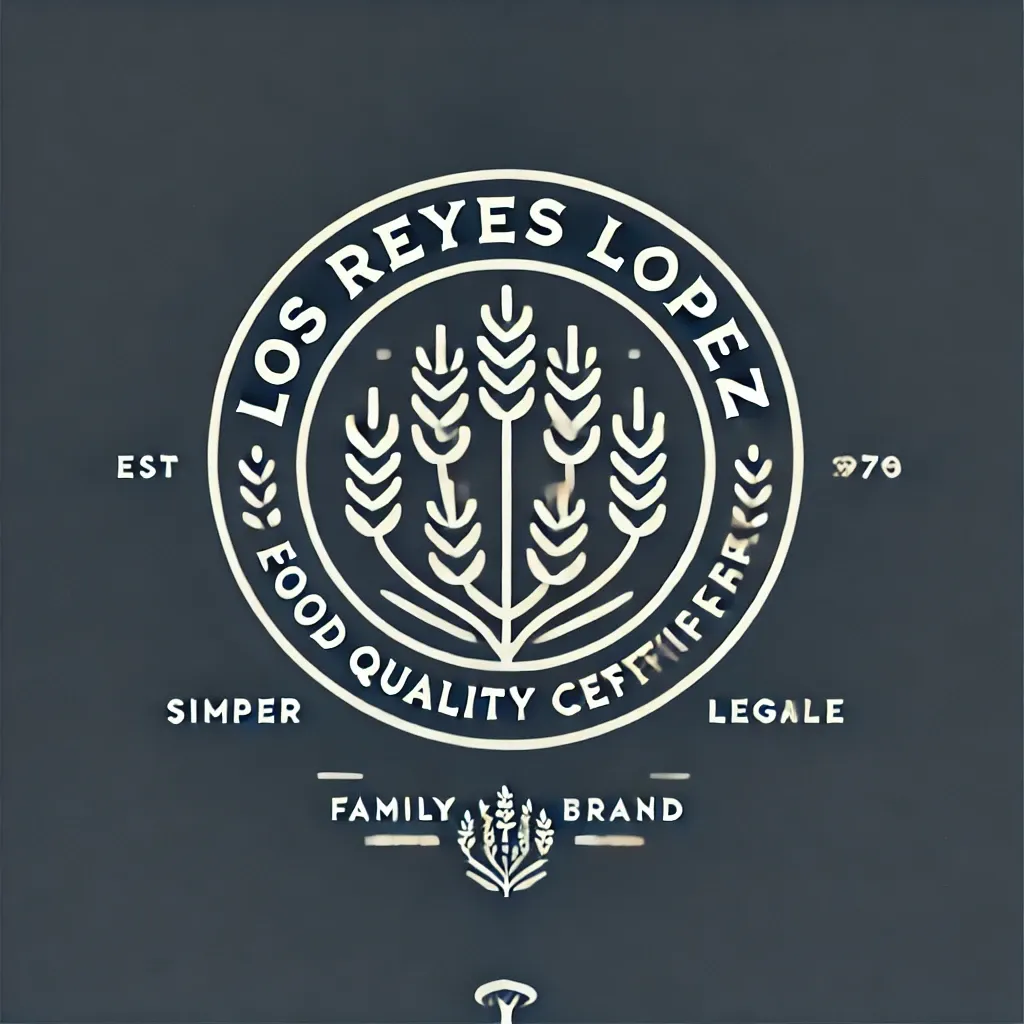

Generative Image Ideas shared with the family with DALLE-4
I also wished for a professional camera when Ania encouraged me to simply use my iPhone. This led to an impromptu photo shoot for the entire family that created the images on this page. I suggested we train someone in the family to take photos in the future, and within no time, a beautiful niece appeared, eager to learn.
She was a quick study, mastering how to frame and project her voice to direct. At the end, we took a moment for me to capture this beauty, another future princess of Tlaxcala among the Lopez Kings (Reyes López) and queens.

When the dust settled, we bought goods from the family to support their efforts and said our goodbyes. Before heading out of town, we drove a couple of blocks away to catch one final vista with the brothers.



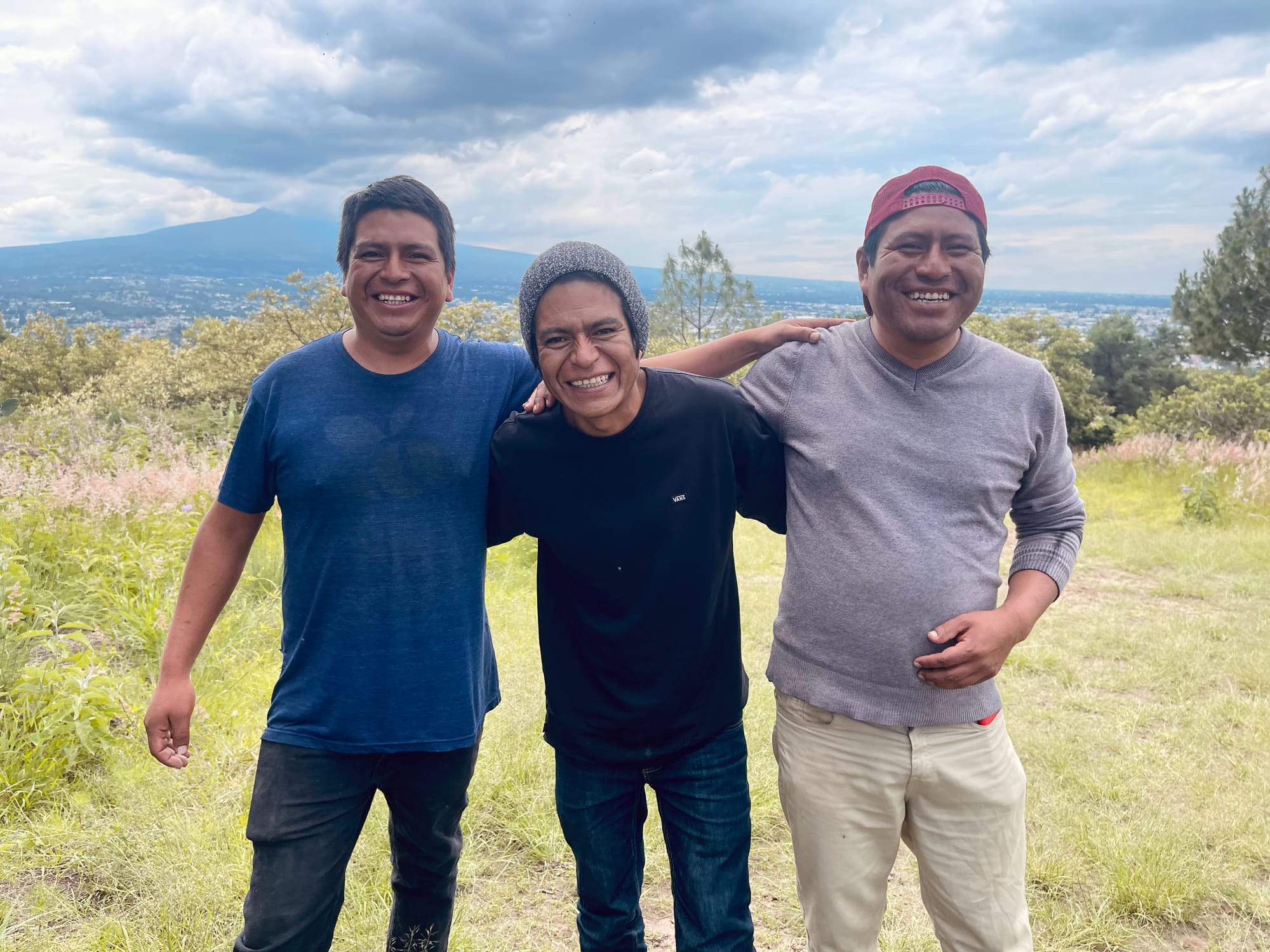


As we close this chapter of our journey, I invite you to reflect on the images that accompany our story. Sometimes, it’s best to allow pictures to speak for themselves. Each photo captures the essence of the moments we've shared and the vibrant life of the Reyes López family.
Can you hear their stories through the images above?

Like a goldfish in a fishbowl, it’s easy to believe our tiny bubble represents the entire world. The limited roads we travel and the algorithmically selected media we consume often lead us to think this represents how most people experience life. Yet traveling and history tell a vastly different story. Culture isn’t a fixed point but a curving arc, and if we leap through the millennia, we find that all our lines converge on one shared pathway of human history—reminding us that our unique stories contribute to a greater narrative shaping our world today.
A special thanks to Saday and the Reyes López family!
Here's a link to the family's projects: https://hidroculturasustentable.com

